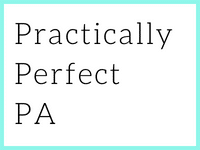Resilience in the Assistant role
Have you ever seen an acrobat expertly traverse a high-wire, carefully placing one foot in front of the other while balancing a long pole in their hands? It’s a sight that keeps audiences on the edge of their seats, holding their collective breaths as the performer navigates the thin line between success and disaster. As Assistants, we, too, walk our own tightropes daily, juggling an array of responsibilities, tasks, and pressures.
Understanding how to balance this professional high-wire is the key to building resilience in our roles. It involves knowing the right amount of healthy pressure that can push us to excel and recognising when it becomes too much, slipping into the stress zone.
Back in 2020, Heather Dallas, NLP Practitioner, shared the idea that the curve of optimum performance, much like a bell curve, perfectly illustrates this balance. On the far left, where pressure and challenges are minimal, we risk underperforming, becoming demotivated, and stagnant. However, on the far right of the curve, where pressure is high, we find ourselves in the realm of excessive stress that can cause a drop in job performance and well-being.
Our bodies, always communicative, signal us when we tip towards this stress zone. Maybe you’ve noticed physical symptoms like headaches or bloating or emotional ones like feeling overly paranoid or losing your temper more than usual. Or perhaps your behaviour has subtly changed; you’re oversleeping, binge eating, or your coffee consumption has skyrocketed. These are all warning signs that your body is buckling under too much stress. Ignore these signs, and you risk sliding further into the stress zone and potentially developing severe stress-related illnesses.
Numerous factors influence how much healthy challenge and pressure we can bear.
Our motivation, experience, job suitability, and personality all play a part in determining our stress thresholds. For instance, if you’re passionately in love with your job, you’ll likely be able to handle a higher level of challenge and pressure than someone who’s not as invested. Similarly, if you’ve been an Assistant for ten years, your skillset and experience will equip you to tackle more challenges than a newbie.
Your job environment also matters. Some thrive in a bustling, global organisation and can handle more significant challenges, while others flourish in a smaller setup or public sector job. And, of course, your age and life stage can influence how much challenge you can comfortably shoulder.
Knowing your personality type can be a game-changer when managing stress and building resilience.
Perhaps you identify with ‘Annie’, the alpha personality, who is intensely focused, goal-driven, and thrives in dynamic, high-pressure environments. Or maybe you resonate more with ‘Brian’, the beta personality, who prefers a laid-back approach, values work-life balance, and thrives in nurturing professions. Many of us, however, display a combination of both personalities. This balanced ‘AB’ type can allow us to adapt to various stressors and challenges.
The ‘hardiness theory’ delves further into resilience building, pointing to three critical factors – control, challenge, and commitment. The study showed that ‘hardy’ Type A individuals, less prone to stress-related illnesses, exhibited high control over their emotions and workloads. They could disassociate from external stress and anger, effectively managing their busy schedules.
These individuals also viewed challenges positively. Rather than seeing a busy work schedule as a stressor, they perceived it as an opportunity for growth and a positive aspect of their job. Lastly, their commitment to their roles led to greater engagement and higher resilience.
Building resilience as an Assistant comes down to understanding your stress signals, knowing your personality type, and developing an outlook that promotes control, challenge, and commitment. It’s a delicate dance on the high wire of professional life, but by maintaining the right balance, you can achieve stellar performance without the debilitating effects of stress. Walking this tightrope might seem daunting, but remember, each step you take is a testament to your growth and resilience as an Executive Assistant. If you want to learn more about resilience and to create a dynamic mindset in your Assistant career, check out the Assistant Mindset Online Course.





